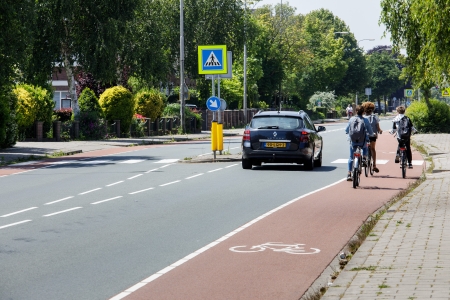Below you will find the list of references that are used in this fact sheet. All sources used can be consulted or retrieved via our Library portal. Here you can also find more literature on this subject.
[1]. Schieber, R.A. & Thompson, N.J. (1996). Developmental risk factors for childhood pedestrian injuries. In: Injury prevention, vol. 2, nr. 3, p. 228-236.
[2]. Barton, B.K. & Schwebel, D.C. (2007). The roles of age , gender , inhibitory control, and parental supervision in children's pedestrian safety. In: Journal of Pediatric Psychology, vol. 32, nr. 5, p. 517-519.
[3]. Vissers, J.A.M.M., Nägele, R.C., Kooistra, A.B., Betuw, A.J.M. van, et al. (2005). Leerdoelendocument Permanente Verkeerseducatie. TT04-056. Traffic Test, Veenendaal.
[4]. Demetre, J.D. (1997). Applying developmental psychology to children's road safety: Problems and prospects. In: Journal of Applied Developmental Psychology, vol. 18, nr. 2, p. 263-270.
[5]. Zeuwts, L., Vansteenkiste, P., Ducheyne, F., Greet, C., et al. (2016). Development of cycling skills in 7- to 12-year-old children. In: Traffic Injury Prevention, vol. 17, nr. 7, p. 736-742.
[6]. Wann, J.P., Pulter, D.R., Purcell, C. (2011). Reduced sensitivity to visual looming inflates the risk posed by speeding vehicles when children try to cross the road. In: Psychological Science, vol. 22, nr. 4.
[7]. Biassoni, F., Bina, M., Confalonieri, F. & Ciceri, R. (2018). Visual exploration of pedestrian crossings by adults and children: Comparison of strategies. In: Transportation Research Part F: Traffic Psychology and Behaviour, vol. 56, p. 227-235.
[8]. Foot, H.C., Thomson, J.A., Tolmie, A.K., Whelan, K.M., et al. (2006). Children's understanding of drivers' intentions. In: British Journal of Developmental Psychology, vol. 24, p. 20.
[9]. Twisk, D., Wesseling, S., Vlakveld, W., Vissers, J., et al. (2018). Higher-order cycling skills among 11- to 13-year-old cyclists and relationships with cycling experience, risky behavior, crashes and self-assessed skill. In: Journal of Safety Research, vol. 67, p. 137-143.
[10]. Reyna, V.F. & Farley, F. (2006). Risk and rationality in adolescent decision making: implications of theory, practice en public policy. In: Psychological Science in the public interest, vol. 7, nr. 1, p. 50.
[11]. VeiligheidNL (2017). Letsels bij kinderen en jeugd 0-18 jaar 2015. VeiligheidNL, Amsterdam.
[12]. Brolin, K., Stockman, I., Andersson, M., Bohman, K., et al. (2015). Safety of children in cars: A review of biomechanical aspects and human body models. In: IATSS Research, vol. 38, nr. 2, p. 92-102.
[13]. Cornelissen, M., Kemler, E. & Hermans, M. (2018). Veilig vervoer van kinderen in de auto. Onderzoek bij kinderen van 0 t/m 8 jaar. VeiligheidNL, Amsterdam.
[14]. Bachman, S.L., Salzman, G.A., Burke, R.V., Arbogast, H., et al. (2016). Observed child restraint misuse in a large, urban community: Results from three years of inspection events. In: Journal of Safety Research, vol. 56, p. 17-22.
[15]. Schoeters, A. & Lequeux, Q. (2018). Klikken we onze kinderen wel veilig vast? Resultaten van de nationale Vias-gedragsmeting over het gebruik van kinderbeveiligingssystemen 2017. Vias institute –Kenniscentrum Verkeersveiligheid, Brussel.
[16]. Kramer, W.L.M. & Haaring, G. (2011). Spaakverwondingen bij kinderen: benadruk preventie. In: Nederlands Tijdschrift voor Geneeskunde, vol. 155, A3736, 4 p.
[17]. Weijermars, W.A.M., Boele-Vos, M.J., Stipdonk, H.L. & Commandeur, J.J.F. (2019). Mogelijke slachtofferreductie door de fietshelm. R-2019-2. SWOV, Den Haag.
[18]. Elliott, M.R., Kallan, M.J., Durbin, D.R. & Winston, F.K. (2006). Effectiveness of child safety seats vs seat belts in reducing risk for death in children in passenger vehicle crashes. In: Archives of Pediatrics & Adolescent Medicine, vol. 160, nr. 6, p. 617-621.
[19]. Kapoor, T., Altenhof, W., Snowdon, A., Howard, A., et al. (2011). A numerical investigation into the effect of CRS misuse on the injury potential of children in frontal and side impact crashes. In: Accident Analysis & Prevention, vol. 43, nr. 4, p. 1438-1450.
[20]. Ma, X., Layde, P. & Zhu, S. (2012). Association between child restraint systems use and injury in motor vehicle crashes. In: Academic Emergency Medicine, vol. 19, nr. 8, p. 916-923.
[21]. Hoekstra, A.T.G. & Twisk, D.A.M. (2010). De rol van ouders in het informele leerproces van kinderen van 4 tot 12 jaar. Een eerste verkenning [The role of parents in the informal learning process of children in the age group 4 to 12 years old. A first investigation]. R-2010-19 [Summary in English]. SWOV, Leidschendam.
[22]. Assailly, J.P. (2017). Road safety education: what works? In: Patient Education and Counseling, vol. 100, suppl. 1, p. S24-S29.
[23]. DaCoTa (2012). Children in road traffic; Deliverable 4.8c of Road Safety Data, Collection, Transfer and Analysis DaCoTa. European Commission, Brussels.
[24]. Metz, F. & Haan, J. de (2013). Dashboard duurzame en slimme mobiliteit: Schoolmobiliteit. KpVV-CROW, Utrecht.
[25]. Lankhuijzen, R. & Lax, J. (2014). Samen veilig naar school: hoe ouders aankijken tegen de school-thuisroute. XTNT Experts in Traffic and Transport. In opdracht van Veilig Verkeer Nederland, Utrecht.
[26]. Houwen, K. van der, Goossen, J. & Veling, I. (2003). Reisgedrag kinderen basisschool: eindrapport. TT 02-95. Traffic Test, In opdracht van het Fietsberaad, Veenendaal.
[27]. Hoekstra, A.T.G., Mesken, J. & Vlakveld, W. (2010). Zelfstandig of begeleid naar school: beleving van verkeersonveiligheid door ouders van basisschoolleerlingen. Een vragenlijststudie [Alone or accompanied to school: perceived safety in traffic by parents of primary school pupils. A survey study]. R-2010-7 [Summary in English]. SWOV, Leidschendam.
[28]. Hoekstra, A.T.G. & Mesken, J. (2010). De rol van ouders bij informele verkeerseducatie; Vragenlijststudie naar kennis, behoeften en motieven van ouders [The role of parents in informal traffic education; Questionnaire study of parents' knowledge, needs and motivation]. R-2010-31 [Summary in English]. SWOV, Leidschendam.
[29]. Wegman, F. & Aarts, L. (2006). Advancing Sustainable Safety; National Road Safety Outlook for 2005-2020. SWOV, Leidschendam.
[30]. Weijermars, W.A.M. & Schagen, I.N.L.G., van (2009). Tien jaar Duurzaam Veilig. Verkeersveiligheidsbalans 1998-2007 [Ten years of Sustainable Safety. Road safety assessment 1998-2007]. R-2009-14 [Summary in English]. SWOV, Leidschendam.
[31]. Schepers, P., Twisk, D., Fishman, E., Fyhrid, A., et al. (2017). The Dutch road to a high level of cycling safety. In: Safety Science, vol. 92, p. 264-273.
[32]. Twisk, D.A.M., Davidse, R.J. & Schepers, P. (2017). Challenges in reducing bicycle casualties with high volume cycle use: Lessons from the Netherlands. In: Gerike, E. & Parking, J. (red.), Cycling futures. From Research into Practice. Ashgate Publishing Limited, Farnham, England, p. 137-154.
[33]. Aarts, L., Eenink, R. & Weijermars, W. (2014). Opschakelen naar meer verkeersveiligheid; naar maximale verkeersveiligheid voor en door iedereen. R-2014-37. SWOV, Den Haag.
[34]. Pol, B., Veldkamp, C. & Baalbergen, J. (2017). De betrokkenheid van ouders/opvoeders bij verkeersveiligheid verhogen: interventierichtingen. Tabula Rasa, Den Haag.
[35]. Muir, C., O'Hern, S., Oxley, J., Devlin, A., et al. (2017). Parental role in children's road safety experiences. In: Transportation Research Part F, vol. 46, p. 195-204.
[36]. Zeuwts, L., Ducheyne, F., Vansteenkiste, P., D'Hondt, E., et al. (2014). Associations between cycling skills, general motor competence and body mass index in 9-year-old children. In: Ergonomics, vol. 58, nr. 1, p. 12.

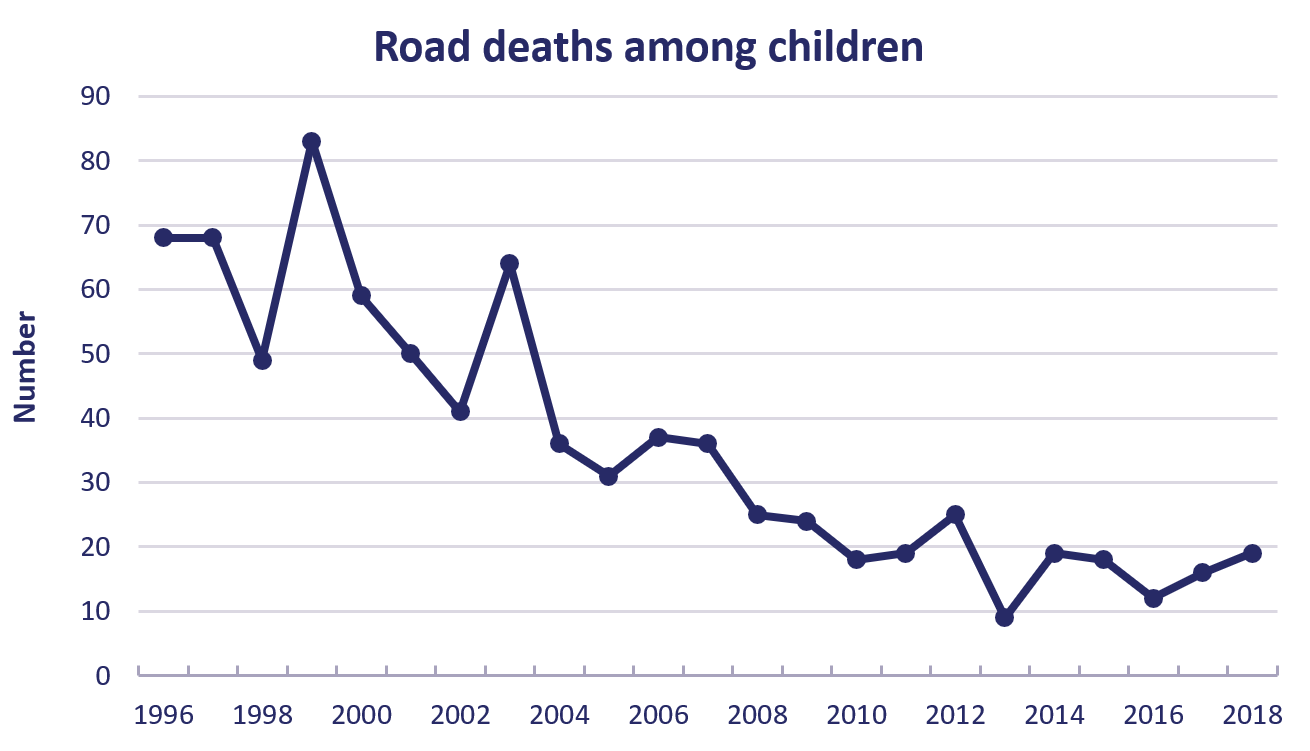 Figure 1. The number of road deaths among children aged 0-14 in the years 1996-2018. Source:
Figure 1. The number of road deaths among children aged 0-14 in the years 1996-2018. Source: 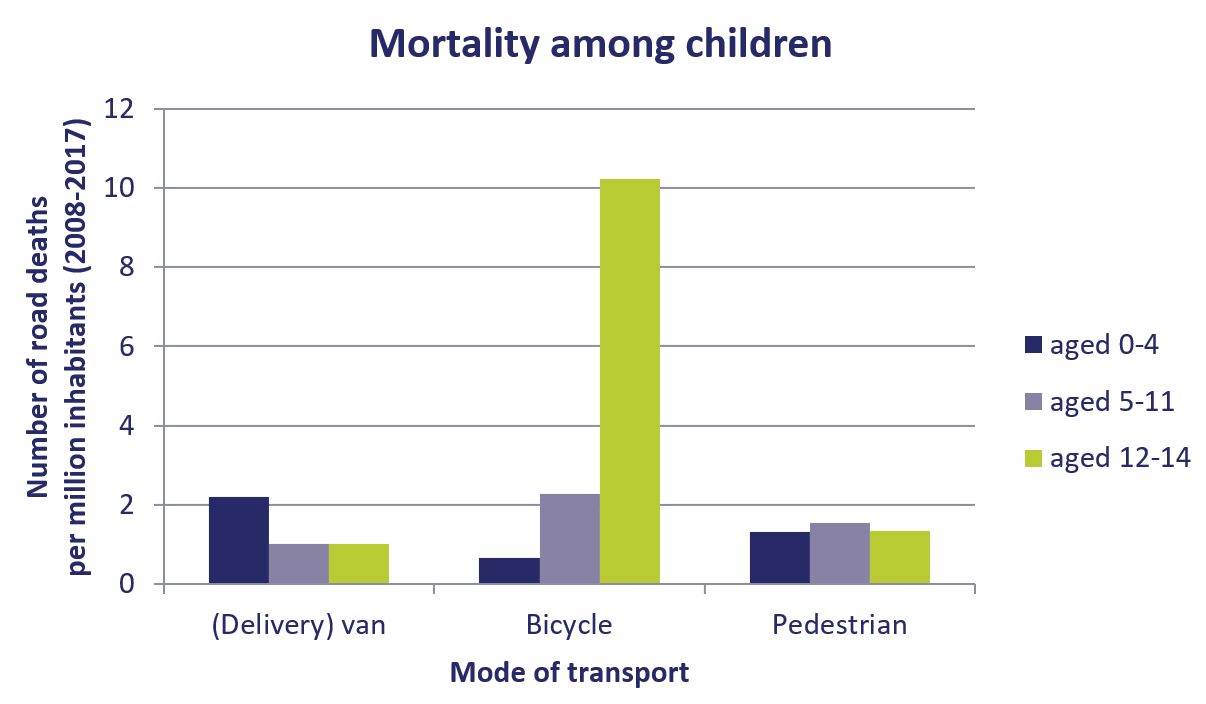 Figure 2. Mortality (the number of road deaths per million inhabitants) among children, by mode of transport (as passenger in a car/delivery van); 2008-2017 averages. Source: Statistics Netherlands (CBS), Ministry of Infrastructure and Water Management (IenW) and Dutch Hospital Data (DHD).
Figure 2. Mortality (the number of road deaths per million inhabitants) among children, by mode of transport (as passenger in a car/delivery van); 2008-2017 averages. Source: Statistics Netherlands (CBS), Ministry of Infrastructure and Water Management (IenW) and Dutch Hospital Data (DHD).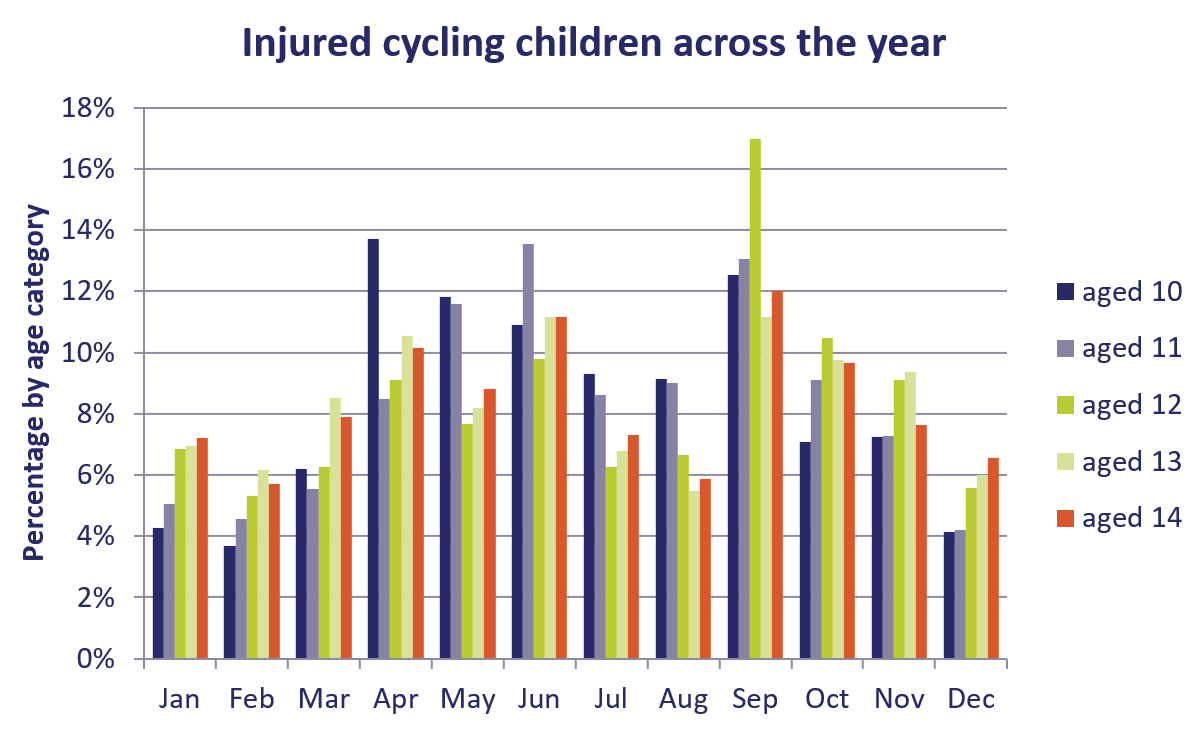
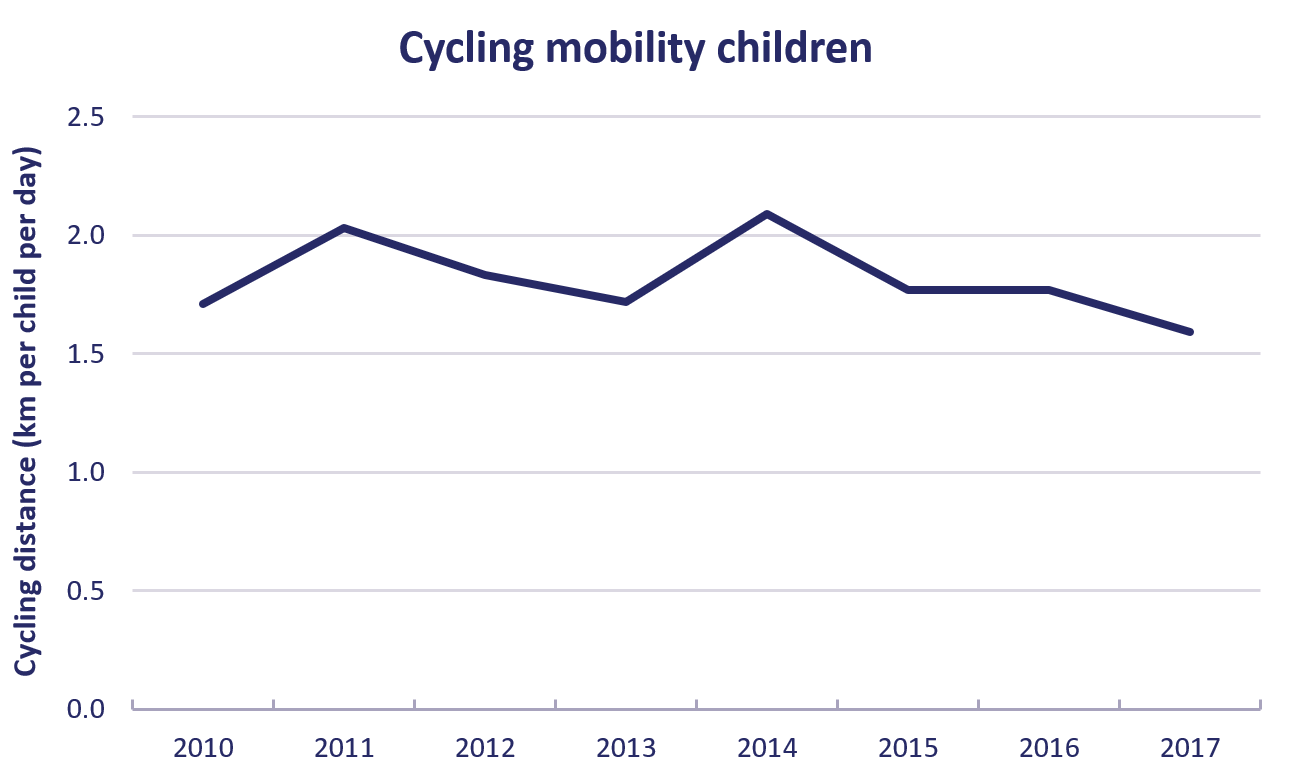 Figure 4. The number of bicycle kilometres per day, per child, for children aged 0-12. Source:
Figure 4. The number of bicycle kilometres per day, per child, for children aged 0-12. Source:  Impact velocity greatly affects injury severity. That is why speed reduction at locations where and times of day when children and motorised traffic meet (in residential areas, near schools and pedestrian/bicycle crossings) is a priority. Optimising and expanding 30km/h zones, and making pedestrian/bicycle crossings safer are also important (also see SWOV fact sheets
Impact velocity greatly affects injury severity. That is why speed reduction at locations where and times of day when children and motorised traffic meet (in residential areas, near schools and pedestrian/bicycle crossings) is a priority. Optimising and expanding 30km/h zones, and making pedestrian/bicycle crossings safer are also important (also see SWOV fact sheets 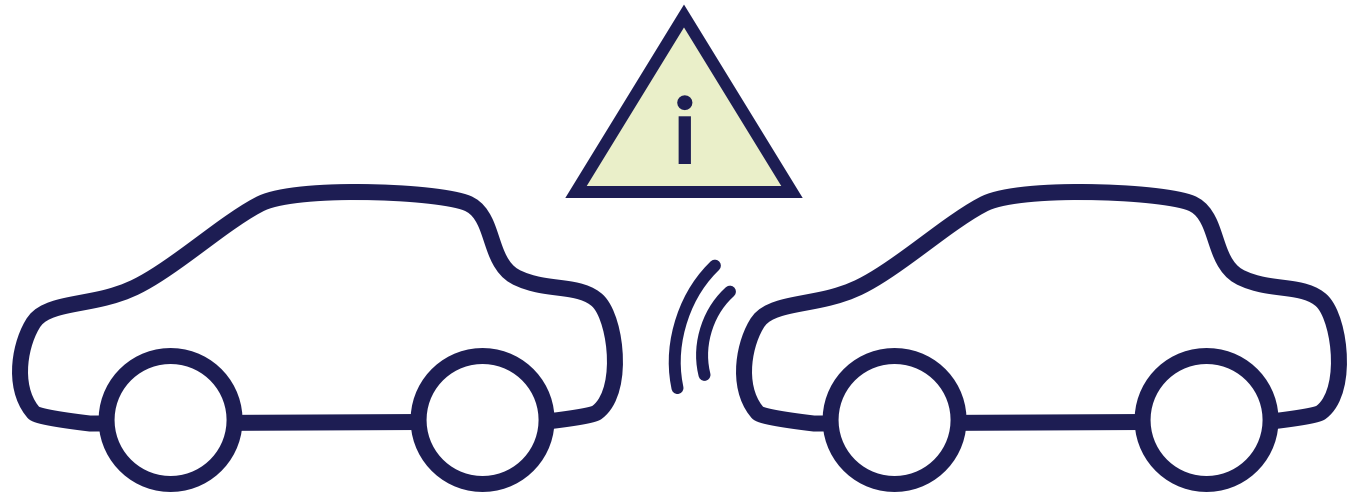 The use of Intelligent Speed Assistance (ISA) as a speed limiter may ensure speed reduction in certain areas where and at certain times of day when a lot of children participate in traffic. Autonomous Emergency Braking (AEB) systems with cyclist and pedestrian recognition may further improve children’s road safety
The use of Intelligent Speed Assistance (ISA) as a speed limiter may ensure speed reduction in certain areas where and at certain times of day when a lot of children participate in traffic. Autonomous Emergency Braking (AEB) systems with cyclist and pedestrian recognition may further improve children’s road safety  Stimulating parents and caregivers to use child restraint seats correctly would improve road safety for children in cars or on bicycles. In addition, they could be stimulated to arrange for better spoke protectors to prevent injuries for bicycle passengers
Stimulating parents and caregivers to use child restraint seats correctly would improve road safety for children in cars or on bicycles. In addition, they could be stimulated to arrange for better spoke protectors to prevent injuries for bicycle passengers 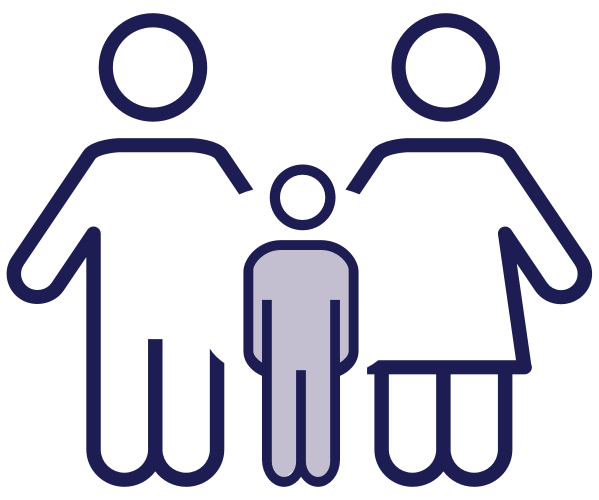 It is important to keep informing parents about acting as role models in traffic and to further motivate them to affect their children’s behaviour in traffic in a positive way
It is important to keep informing parents about acting as role models in traffic and to further motivate them to affect their children’s behaviour in traffic in a positive way 